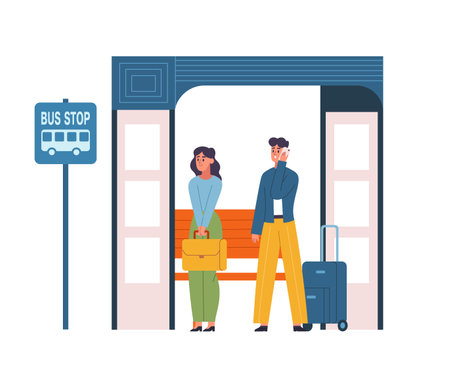Understanding FAA Regulations for Car Seats
If you’re a parent planning to fly with young children, knowing the Federal Aviation Administration (FAA) rules about car seats is crucial. Not only do these regulations impact your family’s safety in the air, but they also affect how smoothly your trip goes. Here’s what you need to know—broken down simply and clearly.
Mandatory vs. Recommended: What’s the Difference?
The FAA has guidelines designed to keep children safe while flying, but not everything is strictly required by law. Let’s clarify what’s mandatory and what’s just recommended:
| Requirement | Mandatory? | Details |
|---|---|---|
| Children Under 2 Years (Lap Child) | No | You can hold your child on your lap during the flight, but it’s not considered as safe as using a car seat. |
| FAA-Approved Car Seat Use | Yes (If using a car seat) | If you bring a car seat onboard, it must be FAA-approved and properly installed in its own airplane seat. |
| Purchasing a Separate Seat for Your Child | No (but highly recommended) | The FAA strongly recommends buying a separate seat for your child and using an approved car seat, but it’s not required by law. |
| Booster Seats & Backless Car Seats | No (not allowed during takeoff/landing) | These are not permitted for use during takeoff or landing. Only certain harnessed seats are allowed. |
What Makes a Car Seat FAA-Approved?
An FAA-approved car seat will have a sticker that says: “This restraint is certified for use in motor vehicles and aircraft.” If your car seat doesn’t have this label, airlines may not let you use it during the flight. Always double-check before you travel!
Key Points for Parents to Remember
- You’re not legally required to buy a separate seat for kids under 2, but it’s much safer if you do.
- If you use a car seat on board, make sure it’s FAA-approved.
- Not all car seats or booster seats are allowed—read your seat manual and check with the airline if unsure.
- Each airline can have its own additional policies, so confirm details when booking tickets.
2. Which Car Seats Are Approved for Air Travel
How to Identify FAA-Approved Car Seats
If you’re planning to fly with your little one, knowing which car seats are approved for airplane use is key. The Federal Aviation Administration (FAA) has specific guidelines to help keep your child safe in the sky. Here’s how you can quickly spot an FAA-approved car seat:
Look for the Required Labeling
The easiest way to check if a car seat is allowed on U.S. airlines is by finding the right label. All FAA-approved car seats must have a sticker that says:
- “This restraint is certified for use in motor vehicles and aircraft.”
This label is usually located on the side or bottom of the car seat. If you don’t see this exact wording, the airline may not let you use the seat onboard, even if it looks sturdy or high-quality.
Features to Look For in an FAA-Approved Car Seat
Besides the label, there are a few other features and details that matter when choosing a car seat for air travel:
| Feature | Why It Matters |
|---|---|
| Harness System | The car seat must have its own internal harness (not just a booster using the plane’s seat belt). |
| Size & Fit | Most airlines require the car seat to fit within 16 inches wide to fit standard airplane seats. |
| Weight Limit | Check manufacturer specs; some seats are only approved up to certain weights for aircraft use. |
| No Booster Only Seats | Backless boosters and those without a harness are not approved for airplane use. |
| American Certification | If you’re flying with a U.S. airline, make sure it’s certified by U.S. standards, not just foreign ones. |
Pro Tips for Parents
- Take a photo of the certification label on your car seat in case airline staff asks at boarding.
- If you have a European or Canadian-certified seat, double-check with your airline before flying—rules can vary.
- Always install the car seat forward-facing in the airplane unless your child meets age and weight requirements for rear-facing and the airline allows it.
- If possible, bring your car seat manual—it can be handy if crew members have questions about installation.
Common Questions About Airplane Car Seats
- Can I use my infant carrier? Yes, as long as it has the required FAA label and harness system.
- Are convertible car seats okay? Absolutely! Just ensure they fit in the airplane seat and have FAA approval labeling.
- What if my car seat doesn’t have a label? Unfortunately, you may not be allowed to use it during flight—even if you’ve used it in cars safely for years.
Selecting an FAA-approved car seat keeps your child safer and gives you peace of mind while traveling through the skies together!
![]()
3. Car Seat Placement and Installation on the Plane
Choosing the Right Spot for Your Car Seat
When you’re flying with your child’s car seat, it’s important to pick the safest and most suitable location on the aircraft. Not every seat on a plane will work for installing a car seat, and different airlines may have slightly different rules. Here’s what you need to know:
| Location | Can You Install a Car Seat? | Why/Why Not? |
|---|---|---|
| Aisle Seat | No | Blocks exit path in emergencies; not allowed by FAA regulations. |
| Middle Seat | Yes (usually) | Often a good choice, especially if flying as a family; doesn’t block exits. |
| Window Seat | Yes (most recommended) | Most airlines and the FAA recommend window seats to keep the car seat out of the way of others. |
| Exit Row | No | FAA prohibits car seats in exit rows or any row directly in front of or behind an exit row. |
Step-by-Step Guide: Installing Your Car Seat on the Plane
- Check Your Car Seat Label: Look for “This restraint is certified for use in motor vehicles and aircraft.” If it doesn’t say this, it might not be allowed onboard.
- Select Your Seat: Try to reserve a window seat for your child’s car seat. If traveling with family, book seats together so you can help with installation.
- Buckle Up: Place the car seat facing forward (unless your child is under 2 years and using a rear-facing seat). Thread the airplane seat belt through the proper belt path. Pull tight so there’s no slack.
- No LATCH System: Airplane seats do not have the LATCH anchors found in cars. Only use the lap belt provided by the airline.
- Check for Security: Wiggle the car seat side-to-side and front-to-back. It shouldn’t move more than an inch at the belt path.
- If You Need Help: Don’t hesitate to ask a flight attendant if you’re unsure about installation—they see this all the time and are happy to help!
Troubleshooting Common Issues
- The buckle is too short: Ask the flight crew for a seat belt extender.
- The car seat seems too big: Double-check your airline’s width restrictions before flying. Most U.S. airlines allow car seats up to 16-17 inches wide.
- Your car seat must face forward: If your child is under 2 and needs a rear-facing seat, make sure you’ve booked a window spot with enough room for installation.
Pro Tip: Practice Before You Fly!
If you can, practice installing your car seat with just a lap belt at home so you’ll feel confident doing it quickly at the airport. With a little preparation, you’ll keep your child safe and enjoy peace of mind during your flight.
4. Airlines’ Policies and Booking Tips
Understanding Airline-Specific Car Seat Policies
Before you book your flight, it’s crucial to check the specific car seat policies of the airline you’re flying with. Not every airline in the U.S. has the same rules when it comes to using car seats onboard. Some allow certain types of car seats, while others may have restrictions based on seat size or aircraft model. Always visit the airline’s official website or call their customer service for up-to-date information.
| Airline | Accepts Car Seats? | Key Rules |
|---|---|---|
| American Airlines | Yes | Car seat must be FAA-approved; can only be used in window seats |
| Delta Air Lines | Yes | Rear-facing seats allowed if they fit; not permitted in exit rows or bulkhead rows |
| United Airlines | Yes | Child restraint devices must display an FAA sticker; only one car seat per row side recommended |
| Southwest Airlines | Yes | No extra fee for car seats; must fit safely within assigned seat dimensions |
| JetBlue Airways | Yes | Only in window seats; no booster seats allowed during takeoff/landing |
Booking the Right Tickets for Your Child’s Safety Seat
If you want to use a car seat during the flight, you need to purchase a separate seat for your child. “Lap infants” (children under 2 years old) usually fly free or at a reduced cost, but they don’t get their own seat unless you pay for it. When booking, make sure to select adjacent seats and let the airline know you’ll be installing a car seat so they can assign you an appropriate spot—usually a window seat away from exit rows.
Tips for Booking:
- Select “child” as passenger type: This often prompts airlines to ask about car seats.
- Avoid basic economy fares: These might limit your ability to choose seats together or pre-board as a family.
- Add special requests: Use comments or special assistance forms to note that youll have a car seat.
- Double-check your reservation: After booking, call the airline to confirm your seating arrangement and ensure your car seat will be accommodated.
Communicating with Airline Staff Before and During Your Trip
The smoother your communication with airline staff, the easier your travel experience will be. Here’s how to keep things simple and stress-free:
Packing Day: What to Tell Airline Staff at Check-In and Gate
- At check-in: Inform agents that you’re traveling with a car seat and confirm your reserved seating arrangement.
- At the gate: Remind gate agents about your car seat so they can help you pre-board and assist with installation if needed.
- If issues arise: Politely reference FAA regulations, show your car seat’s approval sticker, and ask to speak with a supervisor if necessary. Most staff are happy to help when they know you’ve done your homework!
Navigating different airlines’ rules can feel overwhelming, but taking these steps helps set clear expectations for both you and the airline staff—and ensures your little one travels safely and comfortably in their approved car seat.
5. Making Air Travel Smoother for Your Family
Practical Tips for Preparing for the Flight
Traveling with kids and car seats can feel overwhelming, but a little preparation goes a long way. Start by double-checking your car seat’s FAA approval label—it should say “This restraint is certified for use in motor vehicles and aircraft.” Make sure you know how to install it quickly since gate agents and flight attendants often need you to move fast during boarding. Practice at home so you feel confident.
Packing Checklist for Car Seat Travel
| Item | Why Its Helpful |
|---|---|
| FAA-approved car seat | Required for safe air travel with young children |
| Car seat travel bag or backpack | Makes carrying through the airport easier and protects the seat |
| Labeled name tag on car seat | Prevents mix-ups at security or gate check |
| Snacks and refillable water bottle (empty before TSA) | Keeps kids happy and hydrated on board |
| Small toys, coloring books, headphones/tablet | Distractions for longer flights—quiet options are best |
| Extra clothes and wipes | Just in case of spills or accidents mid-flight |
| Comfort item (blanket/stuffed animal) | Helps kids feel secure in a new environment |
Smooth Boarding with Car Seats
If possible, request pre-boarding when you check in or arrive at the gate. Most U.S. airlines offer families with young children this option—just ask! Carry your car seat down the jet bridge; if it’s heavy, use a rolling cart or strap it to your suitcase handle. Install the seat promptly so you’re not rushed by other passengers boarding behind you. If you’re traveling alone, don’t hesitate to ask a flight attendant for help—they’re used to assisting parents.
Navigating Security with Ease
At TSA checkpoints, be prepared to place your car seat on the conveyor belt for screening. Take your time; fellow travelers are usually understanding when they see parents juggling gear and kids. Keeping small items organized in clear bags can make re-packing after security much faster.
Keeping Kids Comfortable During the Journey
The right setup helps everyone have a better flight. Buckle your child into their familiar car seat as soon as you find your row; it provides both safety and comfort in an unfamiliar space. Let your child choose one small item from home—a favorite toy or blanket—to hold onto during takeoff and landing. Offer snacks and drinks frequently, especially if there are delays. For older kids, headphones with downloaded movies or audiobooks are lifesavers.
Parent-to-Parent Tip:
If your child is anxious about flying, talk them through each step before you leave home. Letting them “help” with simple tasks—like carrying their own backpack—gives them a sense of control and excitement about the adventure ahead.
6. Frequently Asked Questions
Can I bring my child’s car seat on the plane?
Yes, you can bring your child’s FAA-approved car seat on the plane if you’ve purchased a separate seat for your child. The car seat must have a label stating it is certified for use in motor vehicles and aircraft. This is the safest option for young children during air travel.
What are the rules about gate-checking car seats?
Most airlines allow you to gate-check your car seat for free, along with a stroller. This means you can use the car seat all the way through security and up to the gate, then hand it over to staff before boarding. It will be returned to you when you land, right at the aircraft door or jetway.
Gate-Checking vs. Checking at Ticket Counter
| Option | When You Hand Over | Where You Pick Up | Pros | Cons |
|---|---|---|---|---|
| Gate-Check | At boarding gate | Jetway/aircraft door upon arrival | Easier to transport in airport; less chance of damage | Might need to wait after landing; still possible minor damage |
| Checked at Counter | During check-in | Baggage claim area after flight | No carrying through airport needed | Higher risk of rough handling or loss; cant use in airport |
Do I need to pay extra fees to bring a car seat?
No, U.S. airlines generally do not charge extra fees for checking a car seat (or stroller), whether at the ticket counter or gate. However, always double-check with your airline before traveling since policies can vary.
How should I pack my car seat for air travel?
If you are checking your car seat (either at the ticket counter or gate), consider using a padded travel bag or cover to protect it from dirt and damage. Some parents also stuff diapers, blankets, or baby gear inside for extra padding.
Can I use my car seat on any airplane seat?
You can use your FAA-approved car seat on most window seats or middle seats (not exit rows). Not all aircraft seats accommodate every type of car seat—check with your airline if you have a bulky model or if flying internationally.
What if my child is over 40 pounds?
The FAA recommends kids under 40 pounds use an appropriate child restraint system (car seat). For older children, many airlines allow approved harness devices like CARES. Booster seats are not allowed during flight but can be checked as luggage.
Luggage Logistics Cheat Sheet
| Item Type | Carries Onboard? | Gate Check? | Luggage Check? | Cost (Most US Airlines) |
|---|---|---|---|---|
| Car Seat (FAA Approved) | Yes, with paid child’s seat | Yes | Yes | Free |
| Stroller | No (usually too large) | Yes | Yes | Free |
| Booster Seat | No (not allowed during flight) | Yes (as checked item) | Yes (as checked item) | Free |
| Packed Car Seat Bag/Box | No (unless fits overhead bin) | No (must check at counter) | Yes (as checked baggage) | Free or standard checked bag fee if exceeds allowance |
If I’m traveling solo with kids, how do I manage everything?
This is a common challenge! Use backpacks for hands-free movement, choose lightweight travel strollers and car seats, and ask airline staff for help when boarding or deplaning. Many airports offer courtesy carts or family lanes at security—don’t hesitate to ask!
I’m worried about damaging our car seat—what should I do?
If you must check your car seat, use a sturdy protective bag and add some padding inside. Label it clearly with your contact info. Some parents choose inexpensive “travel” seats just for flying while keeping their main one safe at home.
TSA & Security Tips:
- You’ll need to place the car seat on the conveyor belt for screening unless it’s being gate-checked.
- If carrying liquids for your child (formula/milk), let TSA know—they make exceptions for baby food and drinks.
Navigating airplane travel with a car seat takes some planning but gets easier each time. With these tips and answers, you can feel more confident getting from point A to B—safely and smoothly—for everyone in your family!


